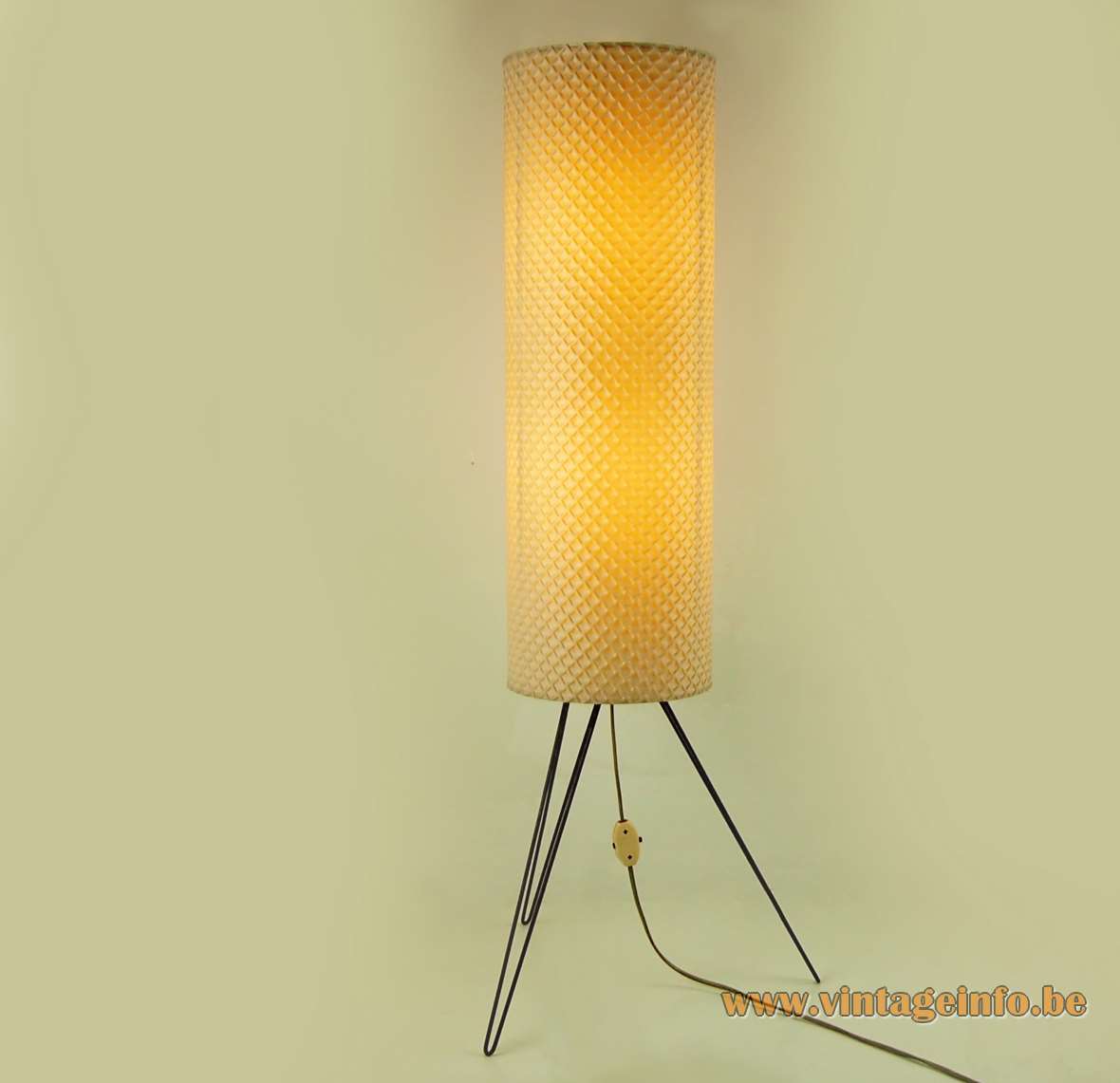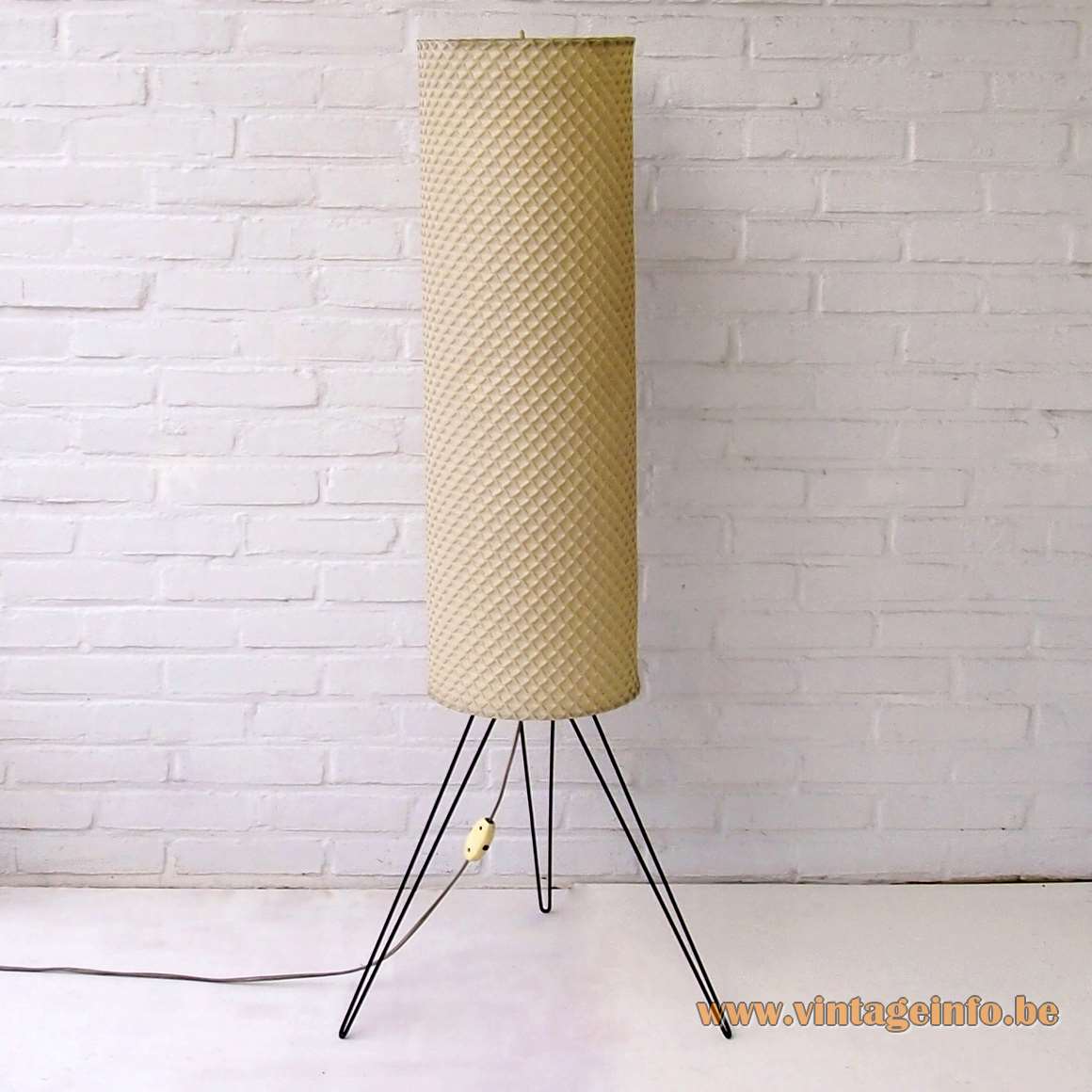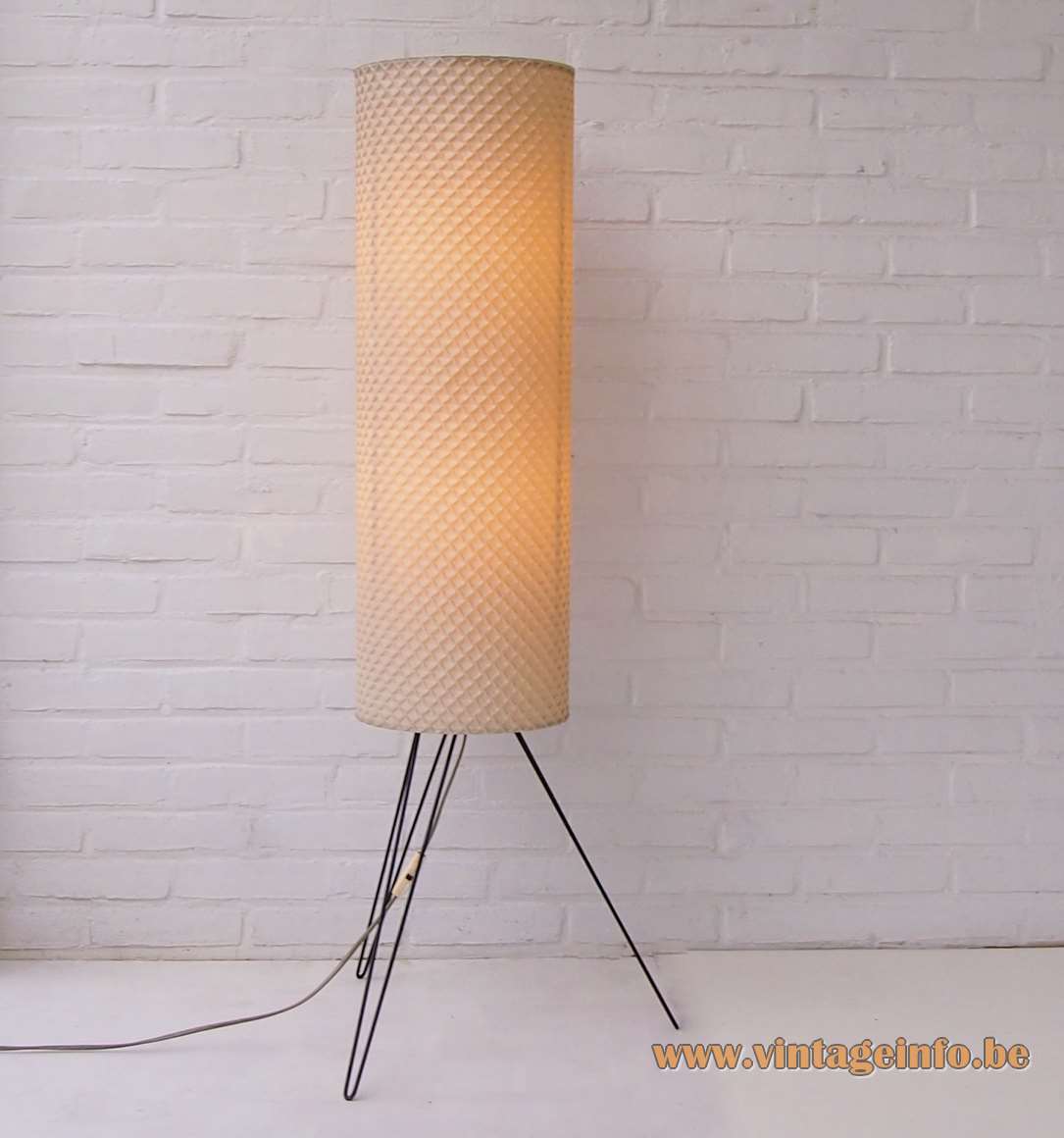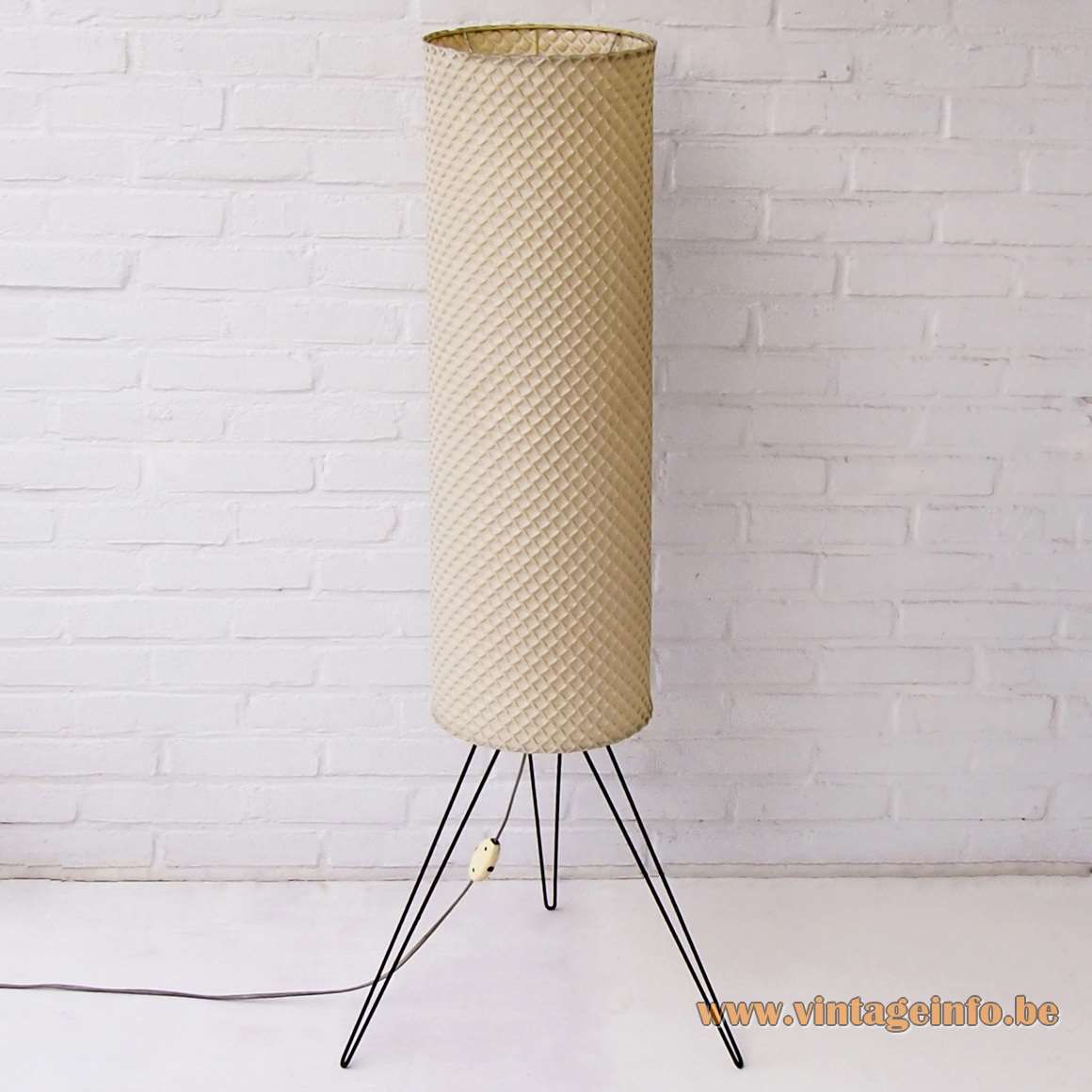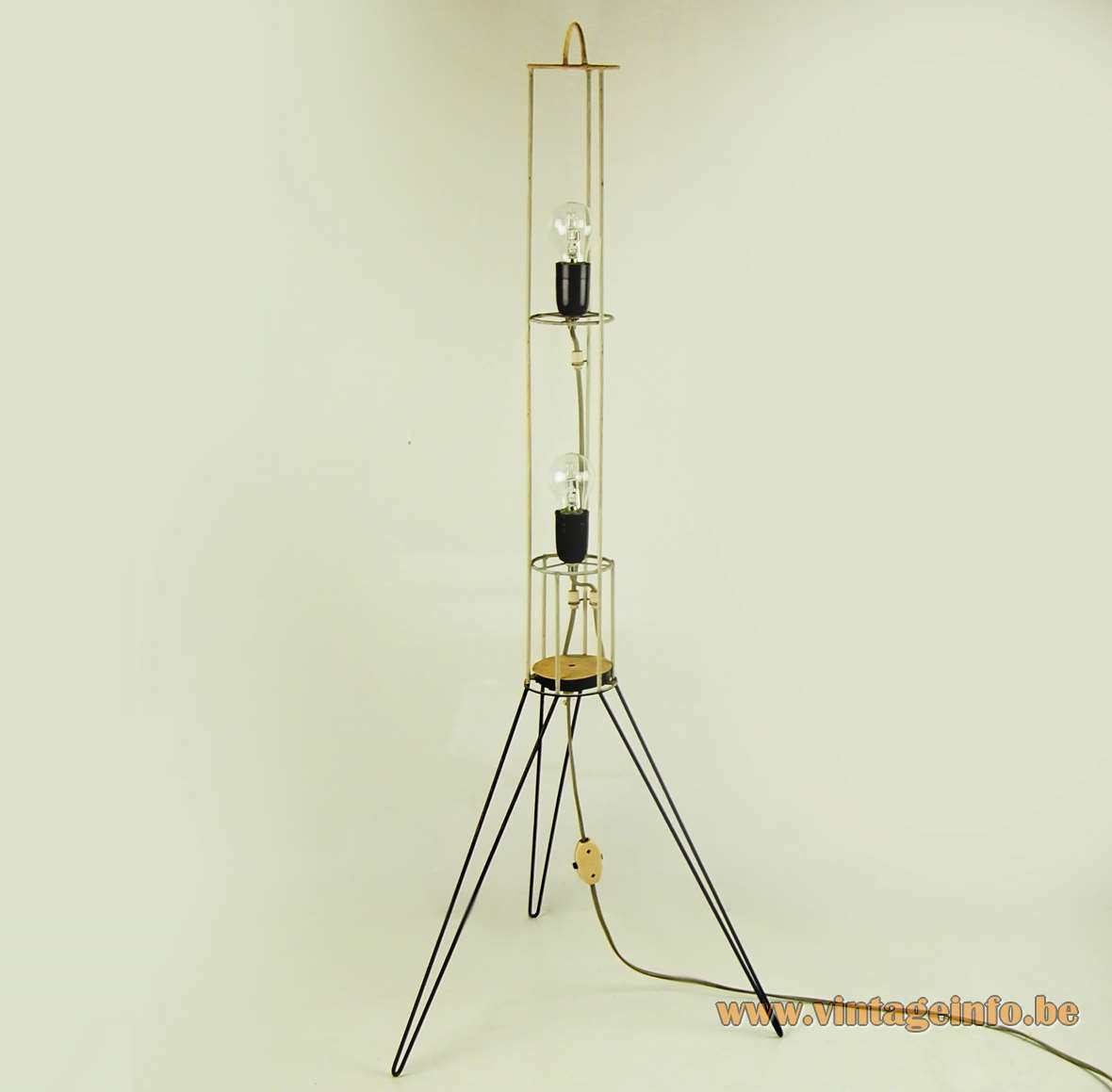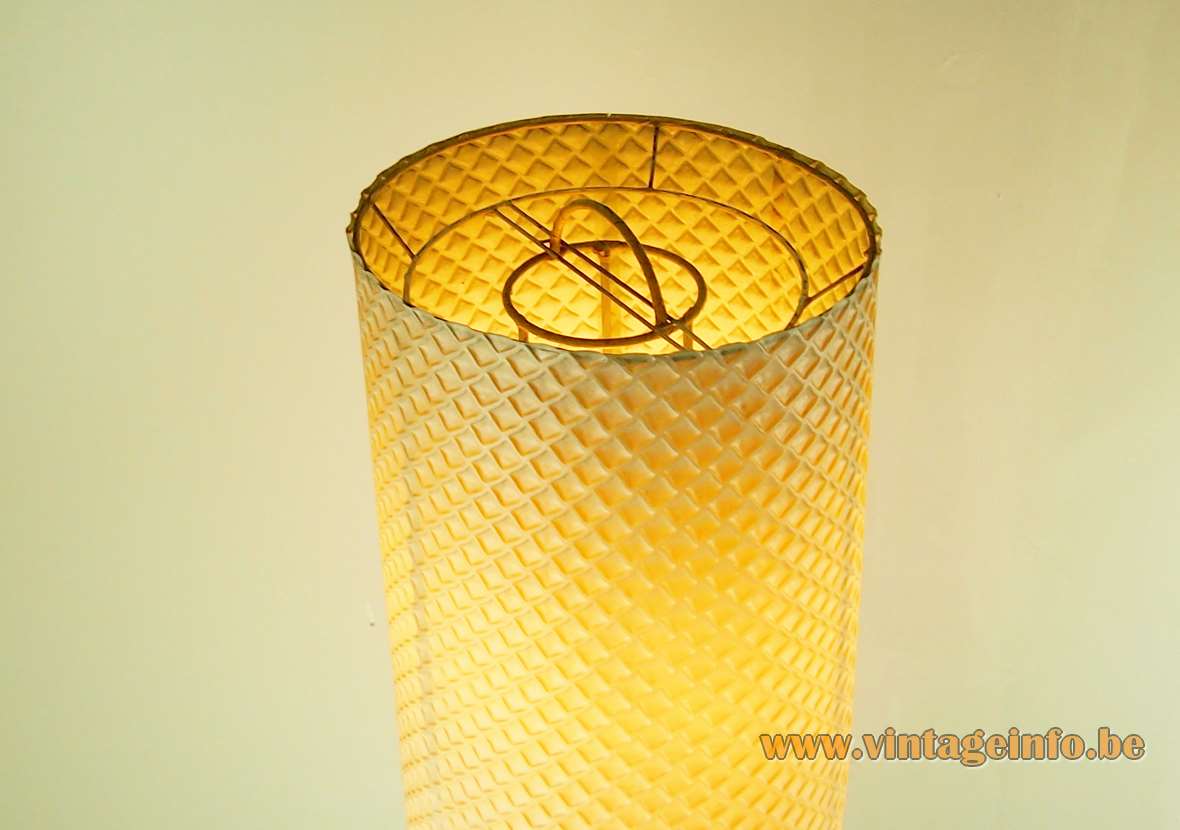Aro Leuchte Tripod Hairpin Floor Lamp
Materials: Black painted iron hairpin wire rods tripod base. Yellow plastic honeycomb structure style tubular lampshade. 2 Bakelite E27 sockets
Height: 120 cm / 47.24”
Lampshade: ∅ 77 x 27 cm / 30.31 x 10.62”
Electricity: 2 bulbs E27, 2 x 60 watt maximum, 110/220 volt.
Any type of light bulb can be used. Not a specific one preferred.
Period: 1970s – Mid-Century Modern.
Designer: To be appraised.
Manufacturer: Aro-Leuchte(n) GmbH, Arnold Licht GmbH, Gelsenkirchener Strasse 5, 46325 Borken, Germany – attributed.
Other versions: This Aro Leuchte tripod hairpin floor lamp was probably made in several sizes and made as a table lamp.
Tubular lamps such as this one were made by many companies, often named rocket lamps.
Aro-Leuchte
Aro-Leuchten GmbH was founded in 1969 as a family business. It ended business in 2006. Not much to be found about the company. Today, the website is offline. The url was www.aro-leuchten.de. Mister Matthias Arnold was the last managing director.
The company was specialised in lamps made of acrylic in stead of glass. Many lamps were designed by other companies in the 1950s and 1960s. Aro-Leuchte produced the plastic versions in the 70s. You can find several examples on the Vintageinfo website. The company used both Aro-Leuchte as Aro-Leuchten on their labels. The website was also with the N.
Another German company named Marbach Leuchten sold several lamps made by Aro Leuchte. They are labelled with their ME logo.
Cellulose acetate
Cellulose acetate is an early plastic, sold under the trade names Rhodoid in France and Great Britain, Tenite in the USA and Cellon in Germany. It was first prepared in 1865. Cellulose acetate is used as a film base in photography, for eyeglasses, cigarette filters and playing cards. Acrylic (1930s) and PVC (1920s) were discovered before World War II, but was only widely used since the late 1950s.
Links (external links open in a new window)
Aro Leuchte lamps with Google Images
Some other lamps with celluloid lampshades on Vintageinfo
Italian 1950s ‘Rhodoïd’ floor lamp
Tripod hairpin rocket floor lamp
Aro Leuchte tripod balloon floor lamp
Many thanks to Ger for the beautiful pictures and enthusiasm.
